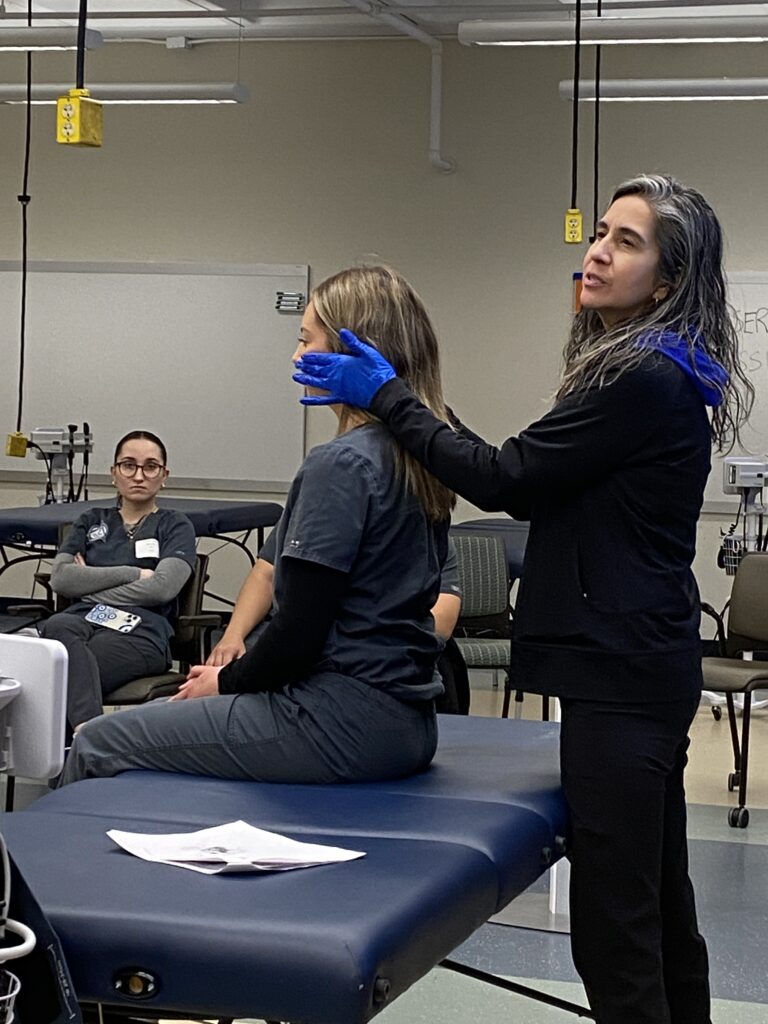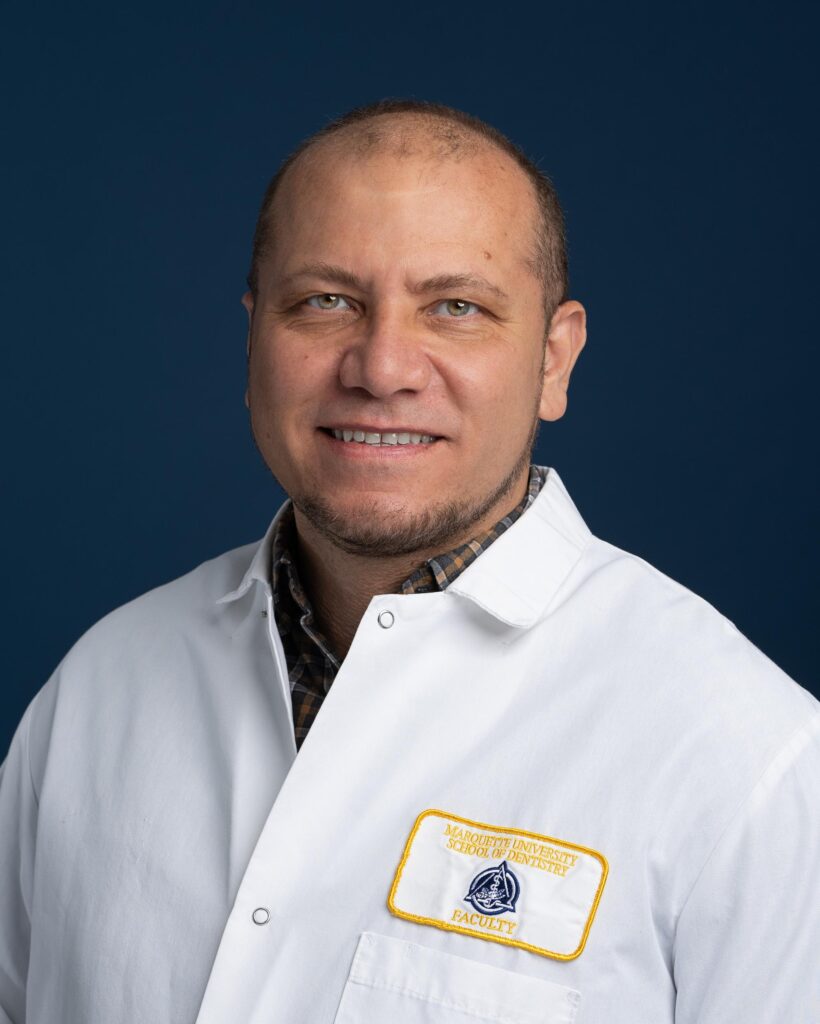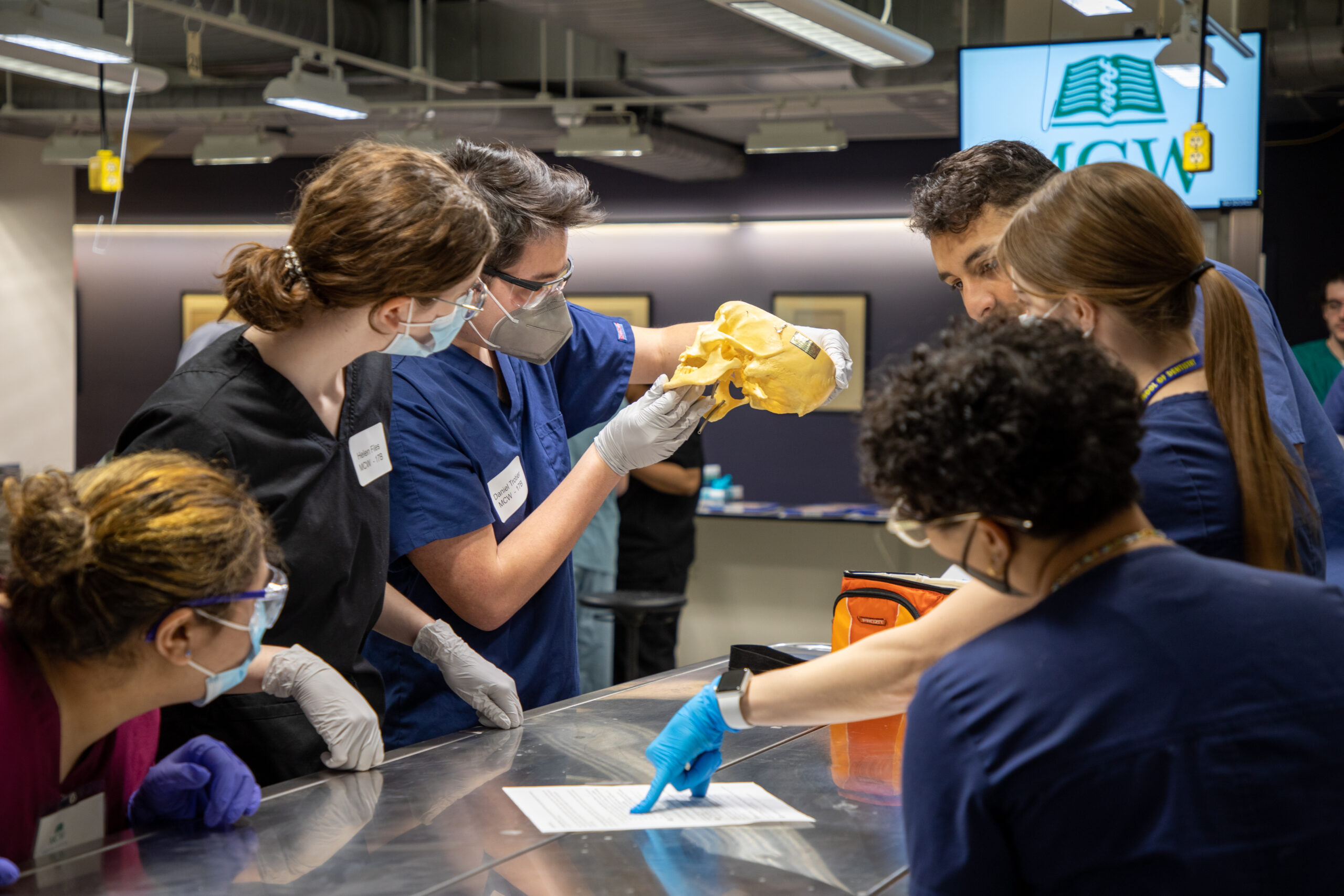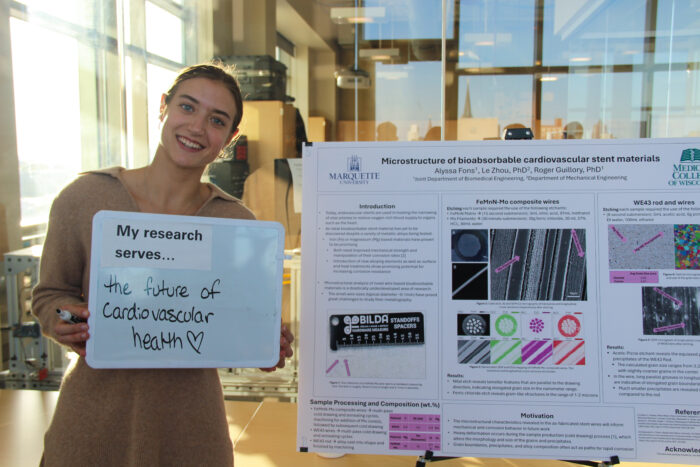
Marquette’s School of Dentistry and the Medical College of Wisconsin are bridging the gap between medicine and dentistry on the issue of temporomandibular disorder (TMD), which causes pain and dysfunction in the jaw joint and muscles controlling jaw movement.
On Thursday, Feb. 8, students from Marquette’s School of Dentistry participated in a collaborative interprofessional event at the Medical College of Wisconsin, learning alongside first-year medical students about the necessity of coordinated care for this multi-faceted condition. The interprofessional program, now in its second year, included 300 students from both campuses with plans to expand next year to include students enrolled in Marquette’s physical therapy program.
The inception of the program began when The TMJ Association, a patient advocacy group based in Milwaukee, reached out to the Medical College with the goal of promoting awareness among practitioners. This advocacy group, created by patients with TMD, is intimately aware of the impact on patients when there is limited evidenced-based training and a lack of standardized care. Patients who live with the orofacial pain associated with TMD can experience prolonged and debilitating effects. The condition can affect basic day-to-day functions like kissing a loved one, eating or sleeping and can have broader-reaching impacts on emotional and psychological health.

Dr. Yasser Khaled, assistant professor in Marquette’s School of Dentistry, shared appropriate care options for TMD through the lens of dentistry. Underscoring the true need for this event, he shared: “Many medical and dental students and physical therapy students are not aware of how to treat TMD. Thus, many patients are lost between different providers until they can finally be referred to TMD specialists.” Shuffling back and forth between providers can further exacerbate the frustrations of patients living with TMD. To address this issue, the workshop braids three disciplines to broaden students’ understanding of the condition through the lens of medicine, physical therapy, and dentistry. Dr. Teresa Patitucci, associate professor in cell biology, neurobiology and anatomy at MCW guided students in an examination of real anatomical specimens of the temporomandibular joint (TMJ) to better understand the underlying structures associated with TMD. And in the spirit of interdisciplinary curiosity, medical and dental students had the chance to step into the shoes of a physical therapist by learning hands-on techniques from staff of Marquette’s Physical Therapy Clinic under the direction of Brent Bode, who also serves as adjunct faculty in Marquette’s Physical Therapy department.
Kirstin Marcks, a second-year dental student at Marquette, shared her experience of the workshop: “As someone who broke their jaw in 2018 leading to TMJ issues, I have never had a good understanding about what happened and what structures were involved with the accident. During the IPE session, I learned more about how the joint works and what symptoms present for different problems. I also have a deep appreciation for working with medical students, as patients are shared across healthcare specialties. The IPE session was extremely beneficial for the future of treating patients with TMJ problems.”
The goal of the workshop is to both promote awareness of TMD, but also to provide students the opportunity to learn how to become collaborative practitioners. Dr. Pradeep Bhagavatula, professor at the School of Dentistry and member of the Interprofessional Education and Collaborative Practice Committee at Marquette sums it up: “The opportunity to exchange ideas and insights with individuals from diverse backgrounds truly highlights the value of interdisciplinary collaboration.”
Interprofessional education events like the TMD workshop teach students the importance of providing coordinated team-based care and how crucial that is for our health care system as they embark on their careers as health professionals.



